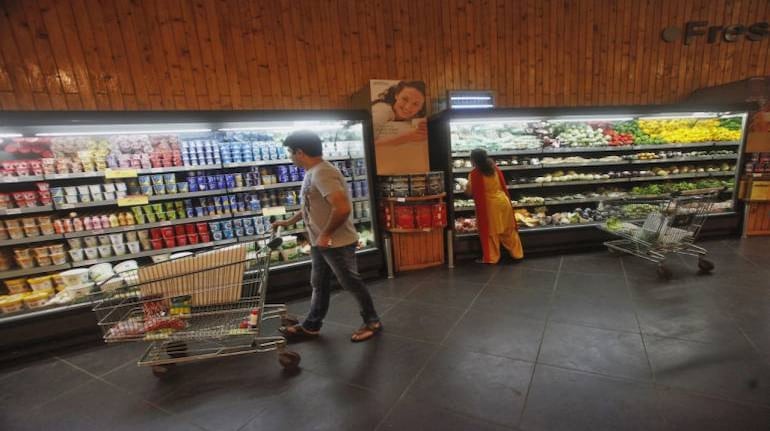Most of the chief executives of companies expect recovery by the end of this FY
Bad news from Q1 seems to be pouring in, much like the incessant rains in Mumbai, for India Inc.
The GDP contraction - by 23.9 percent - was much worse than the forecast of a 18.3 percent drop. It is the biggest contraction on record, and the steepest fall among the world's top economies.
BSE 100 companies saw their sales plummeting by an average 30 percent year-on-year, says a report by Credit Suisse. Operating profit, the report added, dropped 35 percent. The decline was most for energy sector (down by 57 percent) and auto (20 percent).
The results were accompanied by wide spread layoffs and salary cuts. For instance in aviation, more than half of the industry workforce has been sent on leave without pay.
But there is a silver lining - more than one actually - amid the dark clouds. The same Credit Suisse report says that some sectors such as IT and telecom saw an improvement in their margins. And scores of companies, from financial, FMCG and pharma sectors grew by over 10 percent.
A Bloomberg story adds that even though the revenues of 47 NSE Nifty 50 Index companies dropped 40 percent in the first quarter, nearly two-third of them met or exceeded estimates.
These positives tally with the commentary given by companies on the rest of the year, with most of them being cautiously optimistic. Here's a brief look at what these firms said, across sectors. Most of them see a definite recovery, and in some cases going back to pre-COVID-19 levels, by the first quarter of FY21.
Information Technology
Amid the pandemic, IT industry have fared better than expected as they were able to adopt to the new normal faster than expected. The IT firms were able to enable work from home for over 90 percent of their 50 lakh workforce in just a couple of weeks. This enabled them to support their clients during the pandemic, with an increased level of productivity.FMCG
The onset of COVID-19 pandemic and the consequent lockdowns led to a disruption in manufacturing and companies saw their supply chain, and sales and distribution getting impacted.
Unprecedented disruptions in economic activity caused by nationwide lockdowns in the wake of COVID-19 pandemic weighed on the performance of most companies in the first quarter of FY21.
“While constraints continue due to restrictions in several parts of the country and the near-term demand outlook remains uncertain, we remain well positioned to drive competitive, profitable, and responsible growth. The long-term structural opportunity of FMCG in India also remains intact," said Sanjiv Mehta, Chairman & Managing Director, HUL.
While announcing results for June quarter, Marico in its earnings statement had said that it is difficult to set an aspiration for FY21, until more clarity emerges in Q2. It would be the same for all its peers.
Retail
Retailers had to suffer huge losses due to the nationwide lockdown which lasted for over two months. According to the retailers’ association, non-essential retail sales plummeted 80 percent in May, from 50 percent in March.
Most retailers had to go on a spree of cost reduction including renegotiating rentals at stores, offices, and warehouses, with reducing overhead expenses.
“Due to the various amended guidelines issued by local authorities including phasing/re-imposition of lockdowns to combat the spread of Covid-19, the store level activities have been impacted.The trajectory of recovery from this pause would depend on the playout of the Covid pandemic and its effect on consumer sentiment and confidence,” V2 Retail Chairman and Managing Director Ram Chandra Agarwal.
He further added that the company anticipates the situation to stabilise and start turning positive from the third quarter of this fiscal year.
"We believe that there would be a serious uptick in consumer demand with the onset of the festive season starting from Durga Puja and Diwali.”
Adds Spykar CEO Sanjay Vakharia: “We expect the last quarter or the current FY to be very close to the previous year last quarter. So hopefully and subject to no further scares, we think consumption will limp back to it's normal by the mid of the next FY."
Metals
The spectacular recovery in China, which was the first to be hit by COVID-19, has helped the global steel industry, including in India, to prune some of the losses from the ensuing lockdowns.
Indian steel companies, including Tata Steel and JSW Steel, made up for the loss in demand in domestic market, by exporting. Prices have also looked up, with rates increasing by up to Rs 3,500 a ton since July.
"Based on our checks, we expect domestic demand to be stable in August (vs. July) with some pick up in September. As long as demand stays stable, we believe high visibility on export orders until September provides confidence for the steel producers to keep prices high through 2Q despite weak domestic demand," brokerage Morgan Stanley said in a recent report.
Little wonder, Tata Steel MD and CEO TV Narendran expects realisations to improve in the second quarter.
Aviation
The country's largest airline, IndiGo, may have reported one of its higgest quarterly losses in Q1 , but the carrier has already managed to cut down on its cash burn, and expects to deploy 65 percent of its capacity by the third quarter.
CEO Ronojoy Dutta had also earlier spoken about the airline, and the aviation industry in general, recovering to pre-COVID-19 levels by the end of the financial year.This coincides with domestic airlines now frequently clocking 1,000 flights a day, and over a lakh passengers taking to the skies.
In fact, Civil Aviation Minister Hardeep Sing Puri expects a full recovery by Diwali.
With inputs from Swathi Moorthy, Swaraj Baggonkar, Himadri Buch and Prince Mathews Thomas








